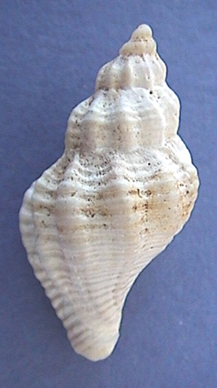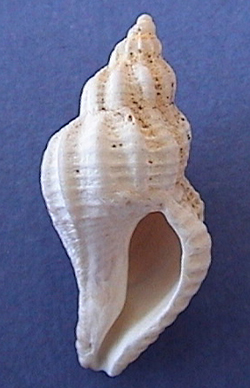|
Atlantic Oyster Drill (Urosalpinx cinerea)
|
|
This drill has a rough exterior and has nine to twelve large ribs that are all equal in size, running from the spire to the lower canal. Spiral ridges also exist running around the shell. Also exhibiting a large aperture, this drill has a short, open lower canal, a smooth inner lip, and a thin, sharp outer lip. Oyster Drills are spindle-shaped, fairly small shells growing less than two inches in length. These ridges are crossed by finer lines circling the shell and are usually tan or gray. The inside of the aperture is often purple. Oyster Drills predate young oysters by drilling a hole into the oyster shell and eating the soft body. Drills usually live on oyster beds, jetties, and pilings from the high tide line to about 50 feet deep where they also prey on barnacles and snails. Oyster Drills cannot tolerate low salinity; therefore, commercial oyster farmers locate their oyster beds in low salinity areas to avoid the threat of oyster drills. |

